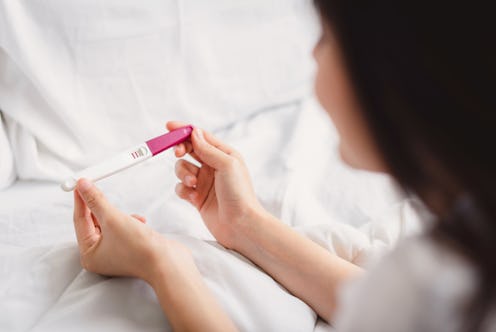Life
A $98 Fertility Screening For Twentysomethings
About ten percent of women are affected by premature ovarian aging (POA), a condition that can make it difficult for women to conceive, especially once they enter their 30s. The phrase “premature ovarian aging” may sound terrifying, but there’s a new — and surprisingly affordable — fertility screening that measures your risk of POA. By doing the screening in their twenties, women can find out if they have or are at risk for POA, and take whatever steps might be necessary to help ensure that they can have the reproductive futures they want.
When someone is diagnosed with POA, it means that she’s losing eggs more quickly than is typical of other women her age. She may have trouble conceiving simply because she has fewer eggs available. According to the Journal of Reproduction & Infertility, the primary risk factor for POA is genetics, although other issues like autoimmune problems, chemotherapy, severe endometriosis, and smoking can also play a role. There are no physical symptoms of POA, so many women don’t realize they have it until they try to get pregnant (often in their 30s) and unexpectedly run into difficulties. A small percentage of women with POA experience a decline in their ovarian reserve in their twenties, when many of them haven't begun to consider trying to conceive.
Dr. Norbert Gleicher, medical director at the Center for Human Reproduction (CHR), told Cosmopolitan, “This condition has existed for thousands of years, but until the last two decades, we didn't know it existed because women had children early.” He adds, “Now that women are starting to have children later, it's a bigger and bigger problem.” Gleicher and two other CHR physicians have developed a screening for POA, available at whatsmyfertility.com in 41 states and some doctor’s offices. The screening costs $98 (in addition to lab costs), and includes a questionnaire relating to family history and three blood tests. One test is a genetic test that looks for a gene mutation associated with POA, and the other two calculate the patient’s current egg supply by testing for the hormones FSH and AMH.
Patients receive a written report, defining them as “(i) likely no risk; (ii) likely increased risk; and (iii) already affected by POA.” The report includes recommendations about what a woman should do, based on her status. The hope is that women who are diagnosed with POA early will be have more choices open to them than women who only discover that they have it when they’re already having fertility problems. Options could include trying to conceive children earlier than they might have previously planned or freezing eggs to be used later.
Images: interstid/Fotolia; Giphy
